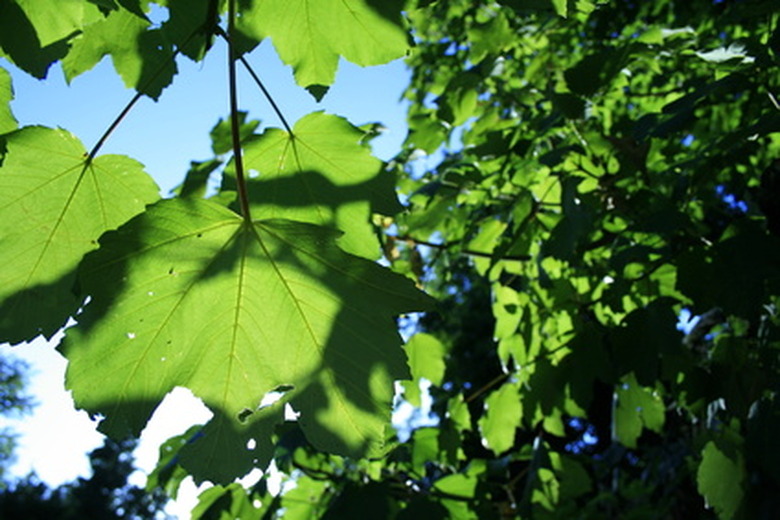Phases Of Photosynthesis & Its Location
Photosynthesis is the process by which plants make food using carbon dioxide, water and sunlight. Carbon dioxide enters the plant through small pores in its leaves, called stomata. Water travels to the leaves via veins in the plant after being absorbed by the roots.
In the photosynthesis process, energy from sunlight is used to create glucose from CO2 and H2O. This glucose provides nourishment for the plant. Since many higher life forms depend both on plants to eat and oxygen to breathe, this process is vital to the survival of ecosystems.
**Note:** Photosynthesis also occurs in algae and some types of bacteria. The focus of this post is on photosynthesis in plants.
Location of Photosynthesis
Location of Photosynthesis
Photosynthesis occurs in chloroplasts found in the leaves and green stems of plants. One leaf has tens of thousands of cells each of which has 40 to 50 chloroplasts.
Each chloroplast is divided into many disk-shaped compartments called thylakoids, which are arranged vertically like a stack of pancakes. Each stack is called a granum (the plural is grana) which is suspended in a fluid called stroma. The light-dependent reactions occur in the grana; the light-independent reactions take place in the stroma of the chloroplasts.
Two Stages of Photosynthesis
Two
Stages of Photosynthesis
Though the entire process can take less than a minute, the photosynthesis process is actually rather complex.
There are two steps of photosynthesis: the light reactions (the photo part) and the dark reactions which are also known as the Calvin Cycle (the synthesis part), and each of the phases of photosynthesis has multiple steps.
Light Dependent Reactions
Light Dependent Reactions
The first step of photosynthesis uses light energy to create the energy carrier molecules that will be used in the second process. Known as light reactions, these reactions use the energy of the sun directly. Hundreds of pigment molecules are contained in photocenters in the thylakoid membrane and act as antennae to absorb light and transfer energy to a chlorophyll molecule.
These photosynthetic pigments allow plants to absorb sunlight, which is needed to start the process. The light excites electrons, causing a higher energy state. This results in the conversion of energy from the sun to chemical energy which provides **food for the plant.**
Chlorophyll molecules in plants make up a reaction center that transfers high-energy electrons to acceptor molecules, which are then transferred through a series of membrane carriers. These high energy electrons pass between molecules and result in the division of water molecules into oxygen, hydrogen ions, and electrons.
In this first step, a series of reactions causes solar energy to be converted to chemical energy and in two separate photosystems, electrons are sequentially transferred to generate adenosine triphosphate (ATP) and nicotine adenine dinucleotide phosphate (NADP+).
Some of the high energy electrons then go on to reduce NADP+ to NADPH. The oxygen produced is diffused out of the chloroplast and escapes into the atmosphere through pores in the leaf. The ATP and NADPH produced in this first stage are used in the next step where glucose is created.
Light Independent Reactions
Light Independent Reactions
The second photosynthesis process results in the biosynthesis of carbohydrates from CO2. In this light-independent (formerly known as dark) phase, the NADPH created in the first step provides the hydrogen that will form glucose while the ATP formed in the light-dependent reactions provides the energy necessary to synthesize it.
Also known as the Calvin Cycle, this phase takes place in the stroma and results in the production of **sucrose,** which will then be used as a source of food and energy for the plant. Named for Melvin Calvin, this phase uses the ATP and NADPH that were created in the first phase, along with the enzyme ribulose bisphosphate carboxylase found in the chloroplast.
Here the ribulose serves as a catalyst, to "fix" carbon molecules which are then converted into carbohydrates that serve as a source of energy for the plant.
Cite This Article
MLA
Yavorski, Kimberly. "Phases Of Photosynthesis & Its Location" sciencing.com, https://www.sciencing.com/phases-photosynthesis-its-location-7184639/. 4 June 2019.
APA
Yavorski, Kimberly. (2019, June 4). Phases Of Photosynthesis & Its Location. sciencing.com. Retrieved from https://www.sciencing.com/phases-photosynthesis-its-location-7184639/
Chicago
Yavorski, Kimberly. Phases Of Photosynthesis & Its Location last modified March 24, 2022. https://www.sciencing.com/phases-photosynthesis-its-location-7184639/
